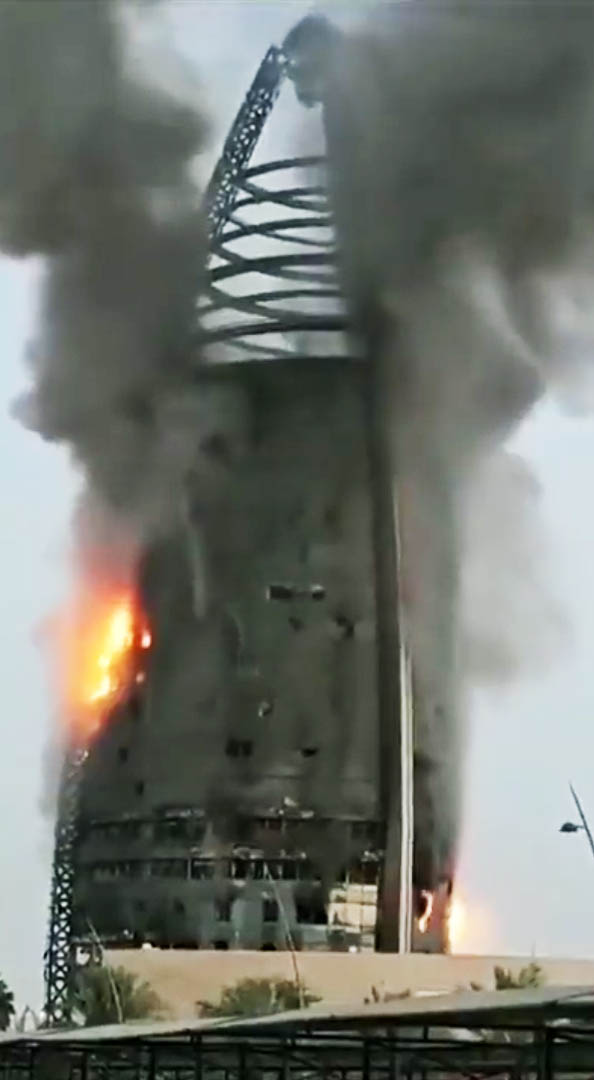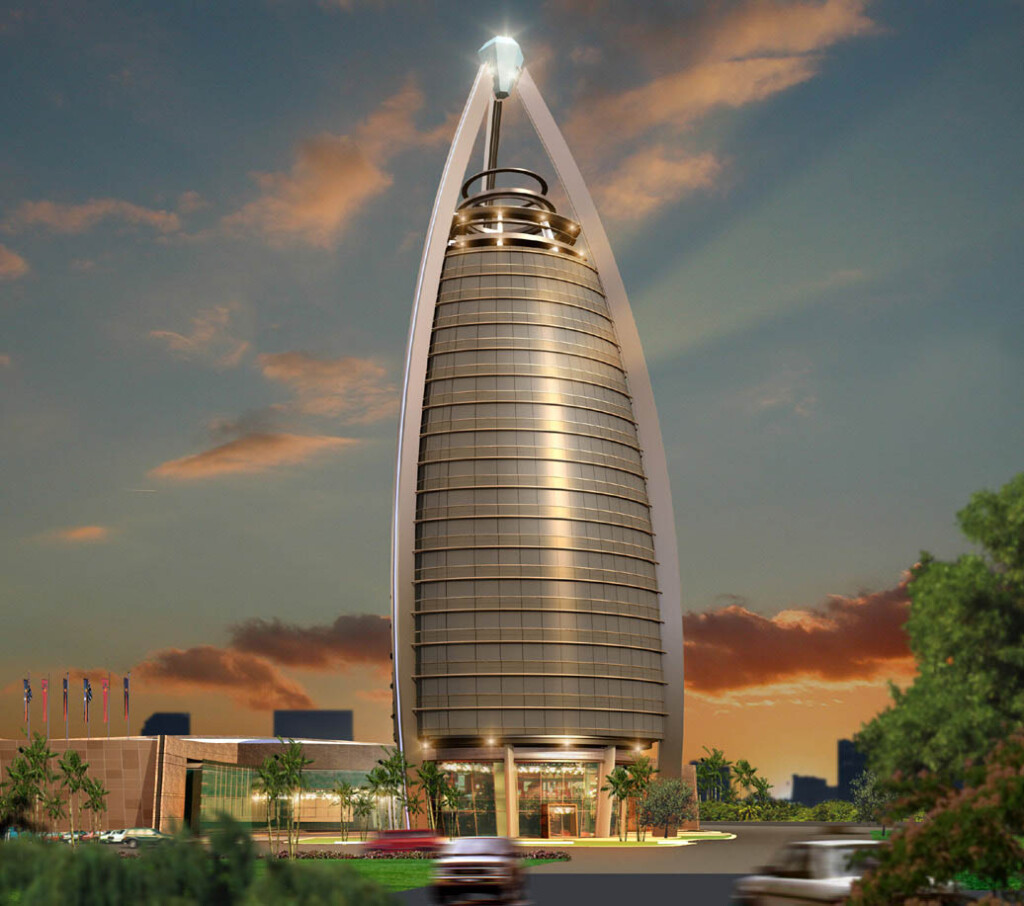Fire ravages landmark GNPOC tower in Sudan capital

The Greater Nile Petroleum Operating Company Tower (GNPOC)* head office, a notable feature of the Khartoum skyline, was engulfed by flames this morning (Photo: @sudanwarmonitor
The Greater Nile Petroleum Operating Company Tower (GNPOC)* head office, a notable feature of the Khartoum skyline, was engulfed by flames this morning, as clashes raged in the Sudan capital. Both the paramilitary Rapid Support Force (RSF) and Sudanese Armed Forces (SAF) are trading accusations over responsibility for the attack that ignited the blaze.
Attacks and fighting in Khartoum resumed this morning after conflict between the SAF and RSF led to several buildings being set on fire. The GNPOC high-rise is located about 1.5 km from the nearest army troops in territory controlled by the RSF.
According to the Sudan War Monitor, this occurred after the RSF attacked areas SAF-controlled areas in Khartoum, which the army repelled yesterday. These include “an office tower belonging to the Ministry of Justice…on the western side of SAF’s defensive perimeter, and another large building… on the grounds of the General Command itself.”, as well as the Sudan Standards and Metrology Organisation headquarters.
Tagreed Abdin, senior architect of the building project in 2006, denounced the fire on X (formerly known as Twitter) as an act of “senseless destruction”. He stated that “this landmark project defined the skyline of Khartoum”.
In a statement yesterday evening, the SAF spokesperson said: “The rebel militia attempted at dawn today to attack some outer positions in the vicinity of the General Command, but by the grace of God it was defeated, and we inflicted losses amounting to dozens of dead and wounded, and the destruction of a large number of combat vehicles, and the remnants of the militia were forced to flee in a short time.”

*The GNPOC is a production and exploration company operating in Sudan, incorporated in June 1997. It undertook construction of the Greater Nile Oil Pipeline, linking Sudan’s inland oil fields with refineries at Khartoum and Port Sudan.
According to its architects, ECGSA, the building is a 17-floor tower that stands as an ovoid curvilinear steel structure encased with dramatic glass elevations. An additional three top floors are devoted to mechanical, electrical, and plumbing services.








 and then
and then